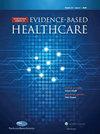心脏病现状:他汀类药物、胆固醇、脂肪和糖。
Q3 Medicine
International Journal of Evidence-Based Healthcare
Pub Date : 2019-09-01
DOI:10.1097/XEB.0000000000000197
引用次数: 8
摘要
经过几十年心血管疾病(CVD)前景的改善,我们现在看到了一个平台期。他汀类药物,曾经被认为是对抗心脏病的最重要的进展,并没有降低心血管疾病的发病率或患病率。对降脂药物的新研究不仅质疑它们在初级保健中的作用,而且确定它们是有害的,会导致其他疾病的发展。当对原始研究进行批判性分析时,数据并没有显示药物显著降低美国心血管疾病一级预防的发病率或患病率。方法:本文阐明了我们目前对降脂治疗潜在心血管疾病的看法。通过讨论相对风险降低和绝对风险降低之间的区别,作者建议改变生活方式一直是并且永远是对抗这种致命慢性疾病的最佳方法。结果:60多年来的科学研究一直在努力确定糖是心血管疾病的罪魁祸首和驱动因素;然而,医疗系统仍在与脂肪和胆固醇作斗争。这篇文章让读者质疑,美国政府和医疗机构(美国心脏协会、美国糖尿病协会和美国心脏病学会)在过去的60-70年里一直在回避什么,因为它没有起作用。在整个文化范围内进行范式变革的时代已经到来。作者建议,只有大型制药公司和大型食品公司将他们的营销习惯从“纯粹的口味”转变为“对你的健康最好”,这才会发生。本文章由计算机程序翻译,如有差异,请以英文原文为准。
The current state of heart disease: statins, cholesterol, fat and sugar.
After decades of improvement in the outlook for cardiovascular disease (CVD), we are now seeing a plateau. Statins, once believed to be the most important advance in the fight against heart disease, have not mitigated the incidence or prevalence of CVD.
AIM
New research into lipid-lowering drugs is not only questioning their usefulness in primary care, but identifying them as harmful, resulting in the development of other diseases. When the original research is critically analyzed, the data do not reveal drugs that significantly reduce the incidence or prevalence for primary prevention of CVD in the United States.
METHODS
The current article sheds light on our current beliefs into lipid-lowering to treat potential CVD. Through a discussion of the difference between relative risk reduction and absolute risk reduction, the author suggests lifestyle modifications have been and always will be the best way to fight against this deadly chronic disease.
RESULTS
There is over 60 years-worth of scientific research that has been desperately trying to identify sugar as the culprit and driver of CVD disease; however, the medical system continues to fight against fat and cholesterol. This article makes the reader question what the US government, in association with the Medical Establishment (American Heart Association, American Diabetes Association and the American College of Cardiology) have been eschewing for the last 60-70 years as it has NOT been working.
CONCLUSION
The time for a culture-wide paradigm change has come. The author suggests this will only happen if Big Pharma and Big Food industries will change their marketing habits from 'purely taste' to 'best for your health'.
求助全文
通过发布文献求助,成功后即可免费获取论文全文。
去求助
来源期刊

International Journal of Evidence-Based Healthcare
Medicine-Health Policy
CiteScore
1.80
自引率
0.00%
发文量
39
期刊介绍:
The International Journal of Evidence-Based Healthcare is the official journal of the Joanna Briggs Institute. It is a fully refereed journal that publishes manuscripts relating to evidence-based medicine and evidence-based practice. It publishes papers containing reliable evidence to assist health professionals in their evaluation and decision-making, and to inform health professionals, students and researchers of outcomes, debates and developments in evidence-based medicine and healthcare.
The journal provides a unique home for publication of systematic reviews (quantitative, qualitative, mixed methods, economic, scoping and prevalence) and implementation projects including the synthesis, transfer and utilisation of evidence in clinical practice. Original scholarly work relating to the synthesis (translation science), transfer (distribution) and utilization (implementation science and evaluation) of evidence to inform multidisciplinary healthcare practice is considered for publication. The journal also publishes original scholarly commentary pieces relating to the generation and synthesis of evidence for practice and quality improvement, the use and evaluation of evidence in practice, and the process of conducting systematic reviews (methodology) which covers quantitative, qualitative, mixed methods, economic, scoping and prevalence methods. In addition, the journal’s content includes implementation projects including the transfer and utilisation of evidence in clinical practice as well as providing a forum for the debate of issues surrounding evidence-based healthcare.
 求助内容:
求助内容: 应助结果提醒方式:
应助结果提醒方式:


